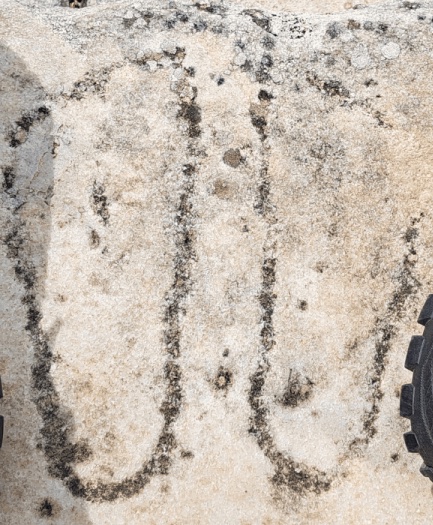Trees are sacred. And the more we know about them, the more we understand how very sacred they are.
The ancient Egyptians, of course, knew this, too. There were a number of trees they held sacred. Yet, perhaps the most intriguing was the ished. The ished is particularly intriguing because it remains a bit mysterious for it has not yet been identified with complete certainty.
And yes, of course, Isis is connected with this mysterious and sacred tree. She is, after all, one of the Egyptian Tree Goddesses.
The Ished in Myth
Mythically, the ished is one of the holy, solar trees associated with Re. It was the sacred tree at Heliopolis on top of which the bennu bird—the phoenix—was eternally reborn in fire. And it was the Tree of Life upon whose leaves and fruits Thoth and Seshat recorded the years of each king’s rule. The tree was also associated with the dead, with renewal, and with Isis’ beloved Osiris, “He Who is in the Heart of the Ished.”
But What Tree is It?
Modern Egyptologists have variously identified the ished, with some of the confusion coming from the fact that the Egyptians themselves seem to have used the word for more than one tree.
In addition, there is some mythological overlap between the ished and another Egyptian sacred tree, the shwab. The most common identification of the ished/shwab today seems to be mimusops laurifolia, an evergreen hardwood tree with fragrant, white flowers and fleshy, eatable fruits. The wood can be used for carpentry and extracts from the bark can be used for tanning leather. It is native to the Ethiopian highlands and now rare in Egypt.
Others have identified the ished as balanites aegyptiaca, a spiny, semi-deciduous desert tree bearing smaller, oval fruits with purgative qualities. Fruits, leaves, and seeds of both trees have been found in Egyptian tombs; minusops leaves were also used in funerary wreaths.
The Persea & Isis
You will also see the sacred ished called by the Greek word persea. In fact, this is the most common name under which you’ll see the tree discussed.
The Greek priest Plutarch is a key source for connecting Isis with the persea. He tells us that the persea is especially sacred to Isis “because its fruit is like a heart and its leaf like a tongue.” He goes on to explain that this is because no human quality is more Divine than reason (especially when it concerns the Deities) and that there is no more driving human force than happiness.
So Plutarch is connecting Isis and the persea with two essentials of human life: relationship with the Divine via reason, and joy of the heart. Of course, this is Plutarch’s Hellenocentric interpretation. A more Egyptian interpretation might be that the heart-shaped fruit refers to the powers of the Goddess to bring forth “what Her heart conceived” while the tongue-like leaves represent “the magical power of Her mouth, being skilled of tongue.”
But we’re not quite out of the woods (so to speak) yet.
Ancient Greek and Latin writers applied the name persea to at least two Egyptian trees. According to the 4th-century-BCE Greek scholar Theophrastus, who made an extensive botanical study entitled Inquiry into Plants, in Egypt there is “another tree called the persea.” He tells us that this persea is large, attractive, and most resembles the pear tree “but it is evergreen, while the other is deciduous.” Theophrastus says that this persea is found only in Egypt.
Generally, Egyptologists today think the ancient authors were referring to the mimusops as the persea. Though, if Theophrastus is right and his record reflects Egyptian usage, the name persea was used for several trees. Which would explain the confusion about its identity.
Theophrastus’ description of the fruit of this evergreen persea is interesting, too. He says that the fruit is gathered unripe and stored. It is about pear-sized, but is “oblong, almond-shaped, and its color is grass green.” He describes the stone inside as like a plum, but smaller and softer. The flesh is sweet and luscious and easily digested and he mentions that it doesn’t cause problems even if eaten in quantity. (It is important to note that when the Greeks used the word “sweet,” they often meant “mild,” not sugary sweet.) Theophrastus’ description seems to better suit the mimusops, the fruit of which is described as delicious, rather than the smaller, purgative fruit of the balanites. Yet mimusops fruit is rounder rather than almond shaped, so perhaps the persea retains its mystery.
Osiris & the Persea
In addition to Isis’ connections with the heart-like fruit and tongue-like leaves of the persea, Osiris has His own persea associations. One of His key symbols, the djed pillar, is a stylized tree. The djed is sometimes shown with eyes and arms that hold the Osirian crook and flail, as if the God were alive within the pillar—causing some Egyptologists to suggest that He was originally a tree spirit.
You may recall that in Plutarch’s telling of the Isis myth, a tree magically grows up around the coffin of the murdered God and is later made into a pillar. In this way, Osiris is indeed within the tree and within the pillar. That tree, too, has been variously identified, from erica to tamerisk to cedar. But if Osiris is the Heart of the Ished, it seems reasonable to assume that the tree that grew up around the body of the Tree God was the holy ished or persea.
A Ptolemaic text records the dedication of an altar and a grove of persea trees to Osiris, Serapis, Isis, and Anubis. In the Roman period, a member of Isis’ Philae temple staff, recorded his good deed of planting four sacred shwab trees, one at Her temple, and three in or outside the nearby town.
We Can Still Honor Isis with Persea Today
While it is unlikely that we will be able to find either the fruit or the leaves of the ancient Egyptian persea today, there is a persea readily available to many of us.
It is the persea americana, our supermarket avocado. Originally from Central America and Mexico, the avocado is a member of the genus persea, evergreens of the laurel family. The persea americana was first so named by the English botanist Philip Miller in 1768. Theophrastus’ description of the Egyptian persea’s fruit no doubt influenced Miller’s choice because his description of the persea’s fruit fits the modern avocado rather precisely.
So, if you wish to honor Our Lady of the Tree—Who conceives in Her heart and speaks All Things into being with Her tongue—you might consider offering Her a lovely bowl of beautiful, green avocados.







































































































































































